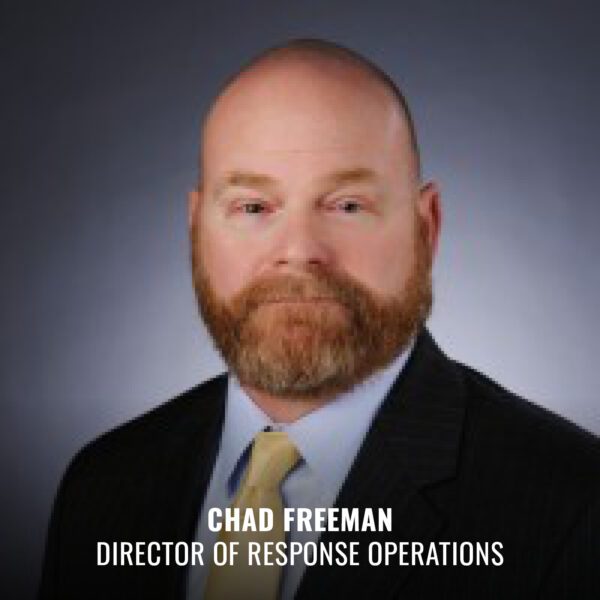
October 22, 2024 | Articles
Walking the Talk: New Vice President, Rail and Transit Gavin Martin

Public agencies and owners today across the U.S. face a daunting challenge in delivering their capital projects and programs on schedule and within budget: a lack of readily available project management expertise.
Staff augmentation offers a way to bridge this talent gap. Staff augmentation as a strategic workforce management approach can help agencies access a vast pool of skilled professionals with the precise skills at the right time needed for a particular project or task. In this white paper, we will explore the benefits of staff augmentation, which contracts to use, and how an augmentation approach implemented correctly can help owners achieve their objectives more efficiently and effectively.
Working with a preselected partner and using a forward planning model can provide immense benefits. This tactical planning approach helps identify, schedule, and prioritize future needs. With the right partner onboard, staff augmentation greatly increases the team’s ability to achieve its specific objectives. This approach is also more focused than a typical labor provider (i.e., body shop) type agreement and yields more favorable outcomes. Additional benefits include:
While there are many advantages to staff augmentation, there are challenges if source selection is not done correctly. These challenges can include:
Despite these risks, staff augmentation can be an effective staffing strategy. Through years of experience working with our clients, Hill International has documented lessons learned and developed some best practices. These include:
By following these practices, you can maximize the benefits of staff augmentation and ensure that you’re making the most of your investment.
Additionally, determining the right way to administer a staff augmentation contract can be challenging. One must decide between a multiple award task order contract (MATOC) or single award task order contract (SATOC) and local or national implementations. Each has its own strengths and weaknesses. Task order contracts are a popular procurement method used by the U.S. government and other agencies to acquire goods and services. Examples include:
Single award: Single award contracts are awarded to a single contractor. This contract requires less administrative effort on the client’s part and works very well at a localized level.
Multiple award: Multiple award contracts are awarded to several contractors concurrently. Multiple award contracts are often preferred over single award contracts because they promote competition and provide the government with a wider range of options to choose from. However, multiple award contracts can require more administrative effort. There will be not only the initial competition for the contracts, but also a series of selections for the award of individual task orders. Multiple award contracts are usually better suited to national or regional contracts.
National contracts: National contracts are agreements between the government and a vendor that allow the government to purchase goods and services at a national level. National contracts are preferred over local contracts because they provide the government with a wider range of options to choose from and can result in significant cost savings. National contracts also provide the government with greater flexibility in terms of the types of goods and services that can be procured.
Local contracts: Local contracts are preferred over national contracts when the goods and services being procured are location-specific or when the government wants to support local businesses. Local contracts can also result in faster delivery times and better customer service.
Choosing the right contracting vehicle helps position the staff augmentation team for success and requires careful planning and consideration.
In the real-world examples below, by following best practices with a mixture of the contract types, Hill has supported a variety of organizations through staff augmentation contracts with a variety of clients and in both local and global locales.

Example 1: Procuring Success Around the World for Merck & Co., Inc.
In the private sector, Merck & Co., a leading global pharmaceutical company, has been using staff augmentation contracts to support its capital projects program. This program spans several countries and thousands of projects. The staffing positions utilized included contract administrator, Quality control inspectors, purchasing analysts, expediters, construction auditors and more. By using a forward planning and partnering approach Merck has benefited from flexibility and having the right resources in the right place at the right time. This has helped Merck keep its core business on track and save countless dollars by scaling staff appropriately.

Example 2: On-Call Recovery Support for UTMB in Galveston, TX
In 2016, The University of Texas Medical Branch (UTMB) suffered damage caused by Hurricane Ike and later storm events. UTMB had to take on recovery projects divided into main components based on operation of campus: healthcare, research, business, academic and infrastructure. With more than 90 buildings in need of repair and mitigation services, UTMB utilized a staff augmentation contract to fill their needs. This approach allowed UTMB to implement projects concurrently and reduce the recovery schedule. Without staff augmentation this could not have been achieved in such a short time frame. Additionally, by bringing in the right expertise they were also able to provide the appropriate mitigation strategies to protect against future events.

Example 3: Staff Augmentation in the Classroom in New York City
In New York City, Hill has been supporting The New York City School Construction Authority (NYCSCA) for more than 15 years with as-needed expert scheduling, estimating, construction management, inspection, and other professional services. The NYCSCA oversees approximately 1,200 public schools and hired Hill to serve as an extension of staff services to their project management group. The NYCSCA was undergoing projects in line with the capital improvement program, targeted $10 billion dollars to be spent. Projects included construction of 200 new schools and renovations, upgrades, and additions to existing schools. Hill’s role is to provide construction management services and expertise to their staff. Responsibilities include coordinating activities for the design and construction of the more complex and/or highly visible construction and modernization projects; making decisions on phasing and scheduling of projects; and providing ongoing interface with contractors, construction managers, local school personnel and the Senior Project Officer on project issues.
The examples above show that if done correctly, staff augmentation can help the client focus on their core business and maintain progress on their critical projects.
Conclusions
In Conclusion, staff augmentation, if executed according to best practices, can be highly beneficial to public agencies and owners. Staff augmentation can help fill the gaps in your workforce, especially for short-term projects, without the need for long-term employment commitments. It can also provide access to a wider pool of talent, including highly skilled and experienced professionals, that one may not have access to otherwise. By choosing the right staff augmentation model, forward planning and partnering one can ensure that they are getting the best value for their money while maintaining control over their projects. We look forward to continuing the conversation and doing a deep dive into which model would work best for you.

Charles “Chad” Freeman has nearly 20 years of experience in the AEC industry, including serving as a Senior Project and Program Manager for disaster recovery and infrastructure projects across the U.S., including work supporting the Federal Emergency Management Agency (FEMA). As a team leader, he has been responsible for overseeing projects and programs throughout the project lifecycle to completion.
Chad currently serves as Director of Response Operations for Hill International, Inc. where he leads the Resiliency and Disaster Recovery practice’s program, project, and construction work for clients involved in housing and other infrastructure recovery programs. Contact Chad at [email protected] or 228-990-2488 for more information on how Hill’s team can help your community recover more efficiently and effectively.
Share

October 22, 2024 | Articles
Walking the Talk: New Vice President, Rail and Transit Gavin Martin

October 18, 2024 | Articles
Future-Proofing Projects: Janakiram VVS Talks India’s Digital Transformation

October 14, 2024 | Articles
Weathering the Storms Part 3: Resiliency Support for Investor-Owned Utilities

October 12, 2024 | Articles
Growing Greener Healthcare: The SNF Global Health Initiative

October 9, 2024 | Articles

October 7, 2024 | Articles
Weathering the Storms Part 2: Leveraging Public Funding for Utility Resiliency

September 30, 2024 | Articles

September 23, 2024 | Articles
Independent Safety Assessments for Rail Projects: Weighing Benefits and Challenges

September 19, 2024 | Articles
Hill Shares Industry Insights to Help Ukrainian Contractors Rebuild

September 19, 2024 | Articles